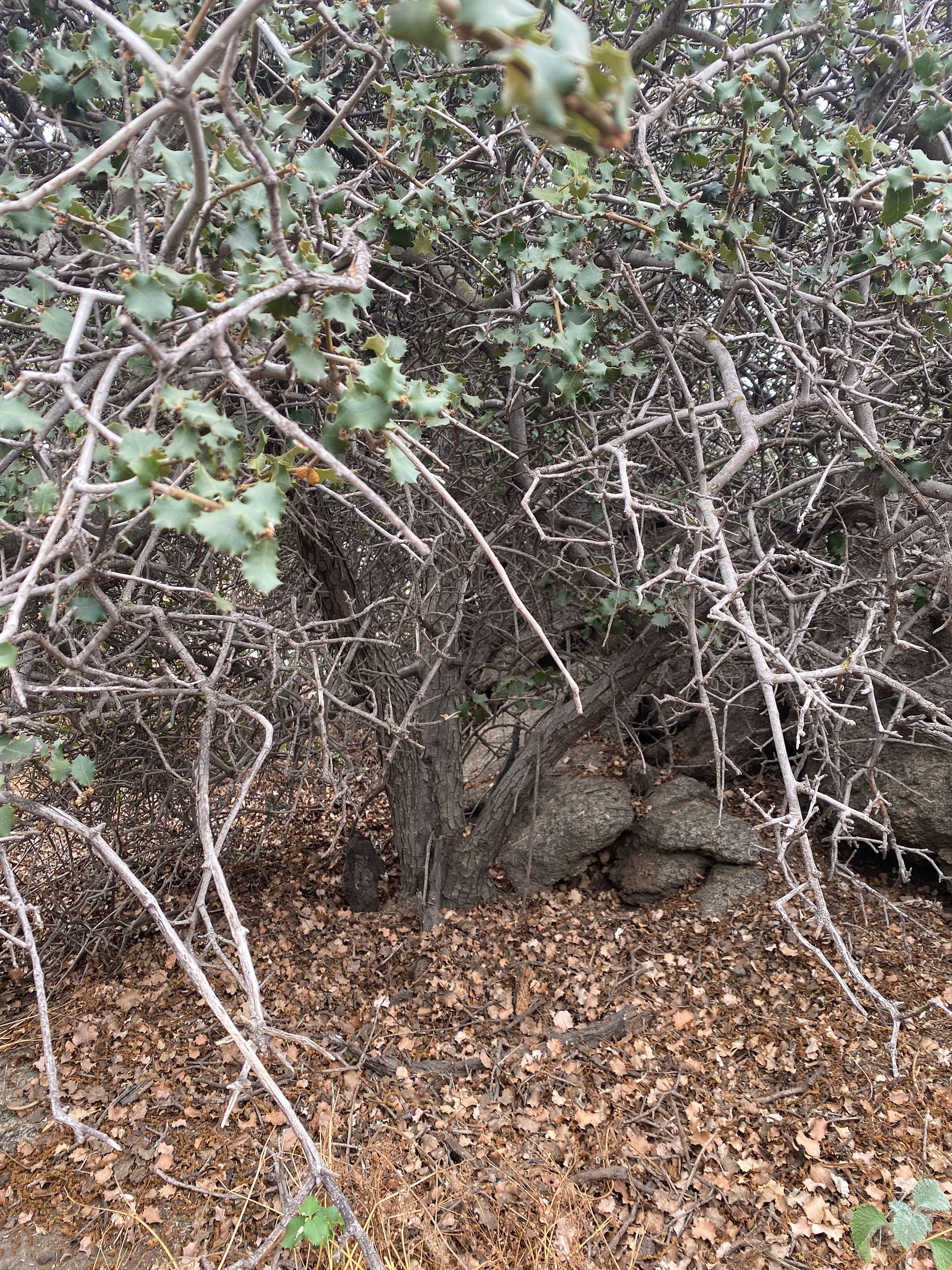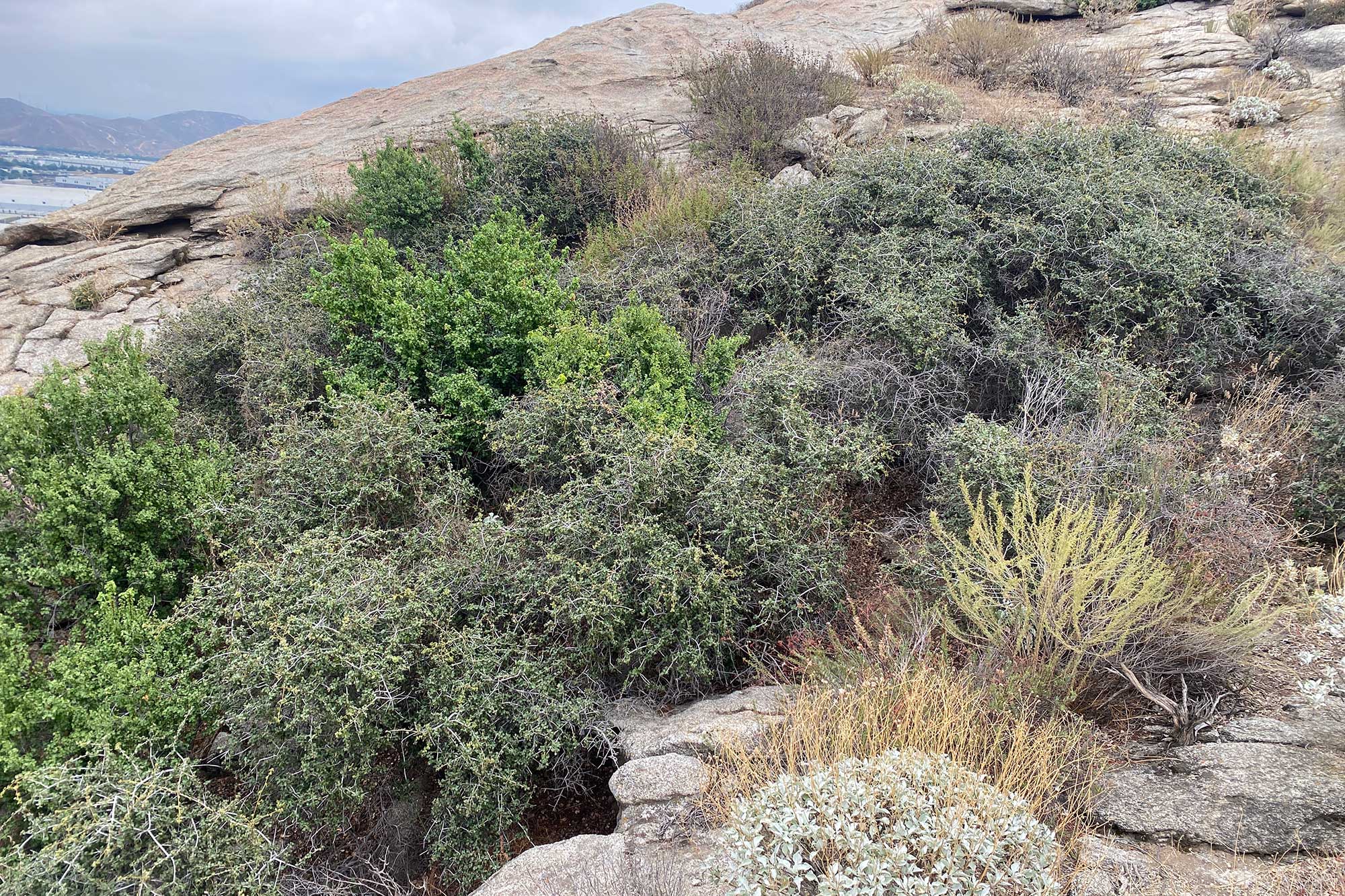City Manager's Year in Review: $4.3 Billion in Growth Highlights Economic Momentum and Emerging Public Safety Pressures
Futrell highlights manufacturing, teaching hospital plans, and convention center expansion in second annual Chamber address.
California’s own “Jurupa Oak,” thriving for over 13,000 years in Jurupa Valley, showcases the state’s deep natural history just minutes from Riverside.

California is a land of superlatives. The state is number one in population. We are the top national producer of about 100 crops and even the number one international producer of some of those (e.g., almonds). California’s General Sherman Giant Sequoia is the world’s largest tree. Death Valley is the hottest and the lowest place on the continent. Mt. Whitney is the highest point in the 48 contiguous states. But you don’t have to go far from Riverside to find a California superlative. Jurupa Valley is home to California’s oldest tree (and, as we shall see, one of the oldest trees in the world).
The road to fame for what has come to be known as the “Jurupa Oak” (or “Hurungna Oak” ) started at the University of California Riverside (UCR). When UCR botanist Mitch Provance found a Palmer’s Oak (Quercus palmeri) growing on a steep hillside in Jurupa Valley in 2003, he knew he was onto something special. Palmer’s Oaks typically live in the mountains, thousands of feet above sea level. This oak lives on a hill barely over 1200 feet above sea level, making it a superlative for its species; no other Palmer’s Oak is known to live at such a low altitude or such a hot climate – miles away from the next nearest member of the species. Also, Palmer’s Oaks usually grow as discrete and separate trees that can grow nearly as high as 20 feet. The oak Provance discovered is a dense cluster of about 70 trunks, each a few inches wide at its base, essentially a thick three-foot-high carpet of treelets - roughly 82 feet long by 26 feet wide.

Lots of evidence suggested that this cluster represents a single clonal individual, growing outwards by vegetative spread. Provance and UCR’s Herbarium curator Andrew Sanders noted burn scars on the trunks, pointing to the likelihood of repeated resprouting after fires that characterize California’s wildlands. They found the growth form and leaves to be quiteuniform from trunk to trunk. Furthermore, oaks are typically unable to successfully self-fertilize; it takes two genotypes to create a viable acorn. But acorns on the Jurupa Oak abort before reaching maturity – as one would expect if all of the treelets were identical genetically.
Provance and Sanders decided that genetic confirmation was necessary to determine this blanket of trunks constituted a single genetic individual. They asked UCR graduate student Jeffrey Ross-Ibarra, a member of my lab at the time, to conduct the genetic analysis. He compared the genetic make-up of dozens of separate trunks with each other and with samples from a population in Garner Valley, near Idyllwild. Leaf tissue from the plants was surveyed for nine different genes. Every treelet sampled from the Jurupa Oak had exactly the same genotype. Those from Garner Valley were all different from each other and different from the Jurupa Oak. Clearly, the genetic data confirmed that the Jurupa Oak is a single genetic individual.
Some years later, after Ross-Ibarra became a Professor at UC Davis, he recruited an undergrad, Michael May, to determine the approximate age of the Jurupa Oak. May measured the width of annual tree rings from several trunks, both of the Jurupa Oak as well as from other populations of Palmer’s Oak. The MINIMUM estimated age of the oak is at least 13,000 years based on the average annual growth rate over all populations and what it would take to grow to the oak’s current areal size.
Southern California was a different place thirteen thousand years ago. When the acorn germinated that grew to become the Jurupa Oak, California was still in the last phase of the Ice Age. It was considerably cooler than now, with glaciers at high elevations in the San Bernardino, San Jacinto, and San Gabriel Mountains. The Inland Empire vegetation would have included various trees, including Palmer’s Oaks. If the young Jurupa Oak could see, it would have enjoyed watching mammoths, mastodons, giant ground sloths, saber-toothed cats, native horses, and American lions (as well as humans).
Why did this tree survive as the climate became hotter and drier? The rest of the species has, for the most part, moved to higher elevations over the millennia. The Jurupa Oak must have access to year-round water. One theory is that the hill it sits on functions like a cistern, each winter accumulating enough water in its deep cracks to sustain the oak through the year. Another hypothesis is that the local aquifer pushes a pressurized dome of water into the hill. Regardless, it has survived heroically.
How does the Jurupa Oak’s age compare with other long-lived clonal trees? At 13,000 years, it has nudged out 12,000-year-old the “King Clone” creosote bush of Lucerne Valley as California’s oldest plant. Outside of California, another potential record holder in North America is a clone of Quaking Aspens in Utah, called “Pando.” Presently, Pando’s MAXIMUM age is estimated to be 14,000 years. Arguably, Pando and the Jurupa Oak are more-or-less tied for first place as the oldest trees in the Northern Hemisphere. In the Southern Hemisphere, Australia boasts three different clonal tree species whose estimated ages are considerably older than either The Jurupa Oak or Pando. For comparison, California’s well-known single-trunk “Methuselah” bristlecone pine tree in the White Mountains is celebrating its 4,856th birthday this year. The Jurupa Oak was roughly 8,000 years old when Methuselah was born.
The Jurupa Oak is notable enough to have earned its own Wikipedia page, but its celebrity hasn’t made it a household celebrity in Riverside. It is hard to find and visit. Located on private property within a mile of 34.033°N 117.391°W in the Crestmore area of Jurupa Valley, getting to the tree involves an extremely steep uphill scramble. Nonetheless, its celebrity is growing. For example, the location of the Jurupa Oak has been designated a sacred site by the Gabrieleño Band of Mission Indians–Kizh Nation.

Will the Jurupa Oak survive another 13,000 years? The current neighborhood of the Jurupa Oak is a sparse collection of homes and logistics buildings. But a much denser neighborhood is in the works. Richland’s Communities proposed “Rio Vista” master-planned community would bring light industry, business parks, schools, and parks, as well as almost 1700 homes.
How does the oak fit into the plan? The Rio Vista Specific Plan Draft EIR recognizes the oak and posits that it gets its water according to the rainwater hypothesis. For mitigation, the EIR proposes a 259-foot construction buffer to isolate it from heavy equipment and an Open Space designation with a 200-foot buffer to be managed by a to-be-determined conservation entity.
Is that sufficient? If the Jurupa Oak is getting its water from an aquifer plume, wells drilled in the planned community could decrease the water pressure and inadvertently disrupt the oak’s water source. Or what if it makes use of cached rainwater, but its root system far exceeds the 259-foot buffer? Also, the fate of the oak and its surrounding area will depend very much on whoever ends up managing the little chunk of Open Space.
Exactly a week ago, on June 26th, the Jurupa Valley Planning Commission met to consider the Jurupa Valley Rio Vista Specific Plan. The Jurupa Oak loomed large in the conversation. The Commission decided to delay a vote until at least July 10th, asking for more detailed studies to determine how the tree gets its water, how a conservation organization would manage and protect the tree, and whether a bigger buffer area would reduce potential problems.
The Jurupa Oak isn’t yet out of the woods (so to speak). To learn more and to keep up with its current adventures, check out the webpages of the Friends of the Jurupa Oak (see below). If you can get enough about the oak, those pages are filledwith even more information, as well as a petition for saving this natural wonder.
Finally, the next time that someone tells you that the Riverside area is biologically boring, let them know that Riverside County is home to one of the oldest trees in the world.
Thanks to Aaron Echols for making his photos of the Jurupa Oak available for this article and to Los Angeles Times writers Noah Haggerty and Louis Sahagun for information and insights regarding the status of the Rio Vista Specific Plan.
Let us email you Riverside's news and events every morning. For free!